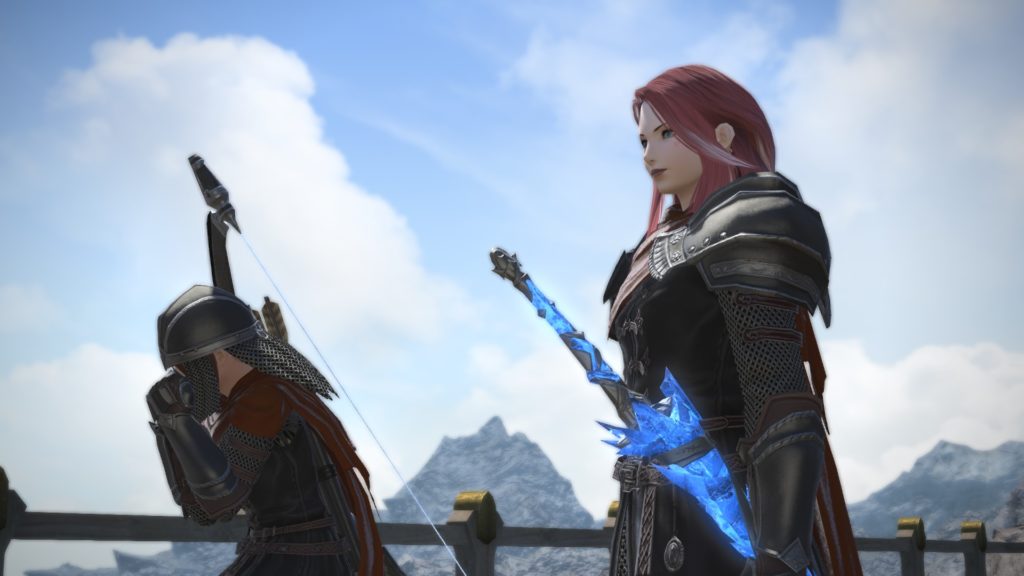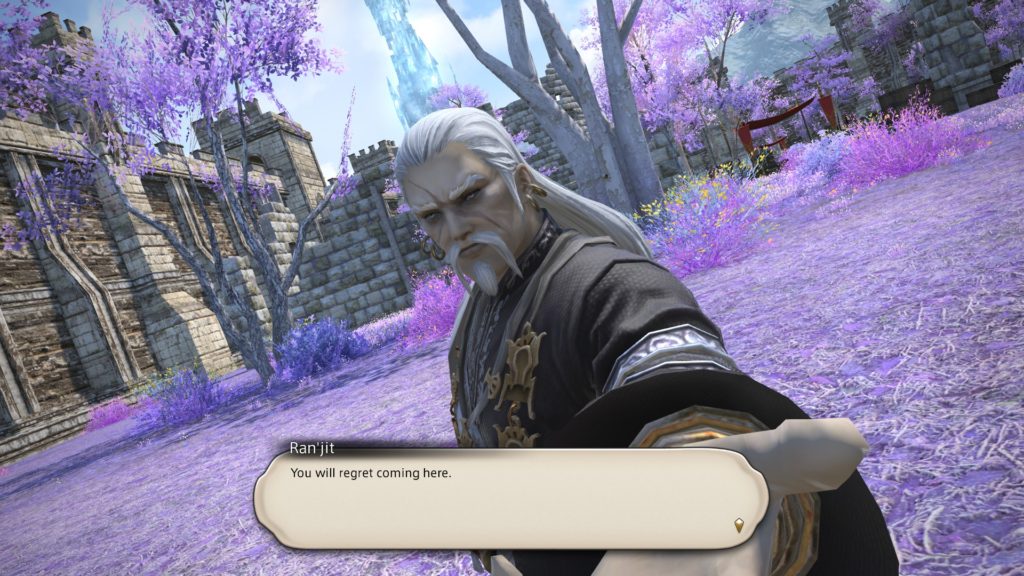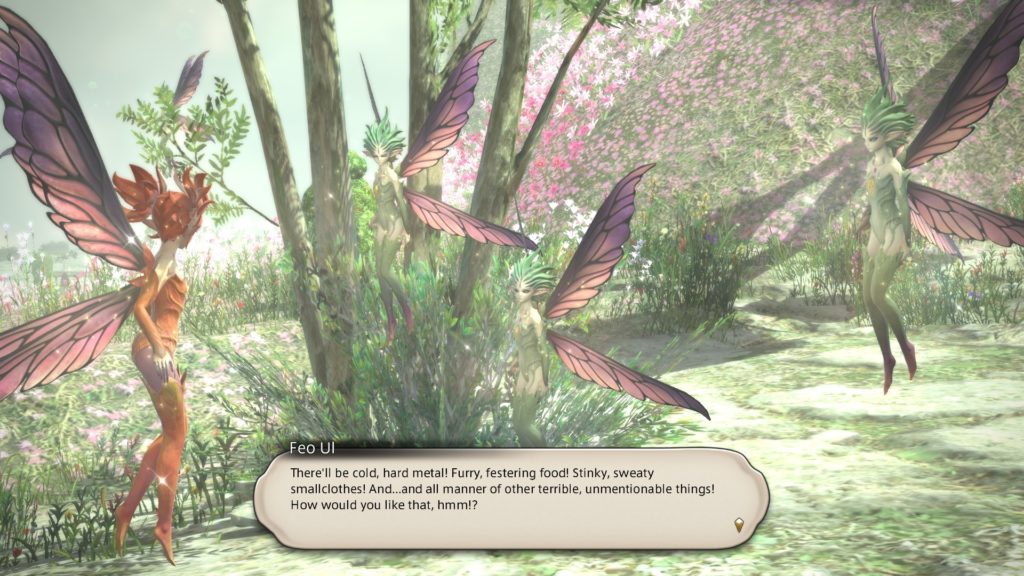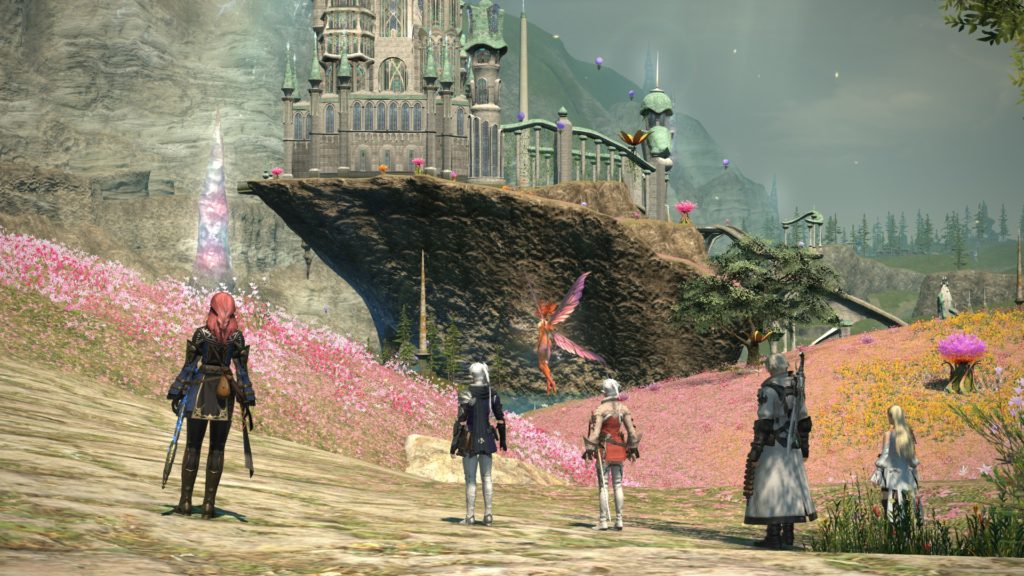The Returner: Satisfying solo Shadowbringers
I’ve been making steady progress through Shadowbringers so far; the quality of this expansion so far has very much given me some renewed enthusiasm to get through the rest of Final Fantasy XIV — not necessarily “as quickly as possible”, but absolutely with a mind to thoroughly exploring and enjoying what is on offer as you work your way through.
One thing that has particularly struck me with Shadowbringers is that, so far — I’m up to about level 72 quests, despite the accelerated levelling for past expansions meaning that my actual character has hit level 76 — it’s felt extremely solo-friendly. So much so that the only things I’ve actually done with other players so far are FATEs — the Full Active Time Encounter events which occur at set intervals around the fields, in which anyone can participate by simply walking into the area and taking part, level-syncing if required.

I have some genuinely mixed feelings about this, as I always have done when I’ve found myself spending a lot of relatively “solitary” time in an MMO. On the one hand, not having to be reliant on other players is great, because it means you can work your way through the story and progression completely at your own pace. On the other, though, there’s always that pesky thought nibbling at the back of your mind: “I’m playing an MMO; shouldn’t I be playing with other people more?”
On the other, however, one of the best things about Final Fantasy XIV, right from the outset, has always been the fact that it is a really good Final Fantasy. It is a mainline installment in the Final Fantasy series, after all, and it very much lives up to that fact with an epic story, memorable characters, brilliant music and… it’s just lovely, all right?
If it was entirely multiplayer, then that inherent “Final Fantasy-ness” would almost certainly suffer. You just have to look at Final Fantasy XI’s early days to see this — while the game is very solo-friendly now, back when it first launched, progression was so dependent on other people that it could be weeks or months before you saw a new story beat.
This is absolutely not the case for much of Final Fantasy XIV, though from A Realm Reborn up until Stormblood, you would often have to break off your single-player adventures to queue up for a 4-player dungeon or an 8-player trial. While 8-player trials are still best handled with other people due to the relative complexity of their mechanics, 4-player dungeons are absolutely doable with the new Trust system introduced in Shadowbringers — plus, when you’re running through the story, it’s outright desirable to do them with Trusts, owing to the exclusive dialogue that shows up.

For the unfamiliar, the Trust system — named for a similar system that was added to Final Fantasy XI a while back — allows you to enter 4-player dungeons alongside important characters from the main story. The system is balanced in such a way that regardless of whichever class or role you’re playing, you can always get straight into a Shadowbringers or Endwalker main scenario dungeon without needing to queue — the various characters you’ll party up with cover all the main tank, DPS and healer roles between them, with the character known as The Crystal Exarch even able to switch classes as required.
When in a dungeon with Trusts, you lead the way, regardless of class — though the tank Trusts are eminently capable of pulling aggro straight off you once you trigger an enemy encounter. In contrast with the Adventurer Squadrons that were introduced a while back, and which it’s possible to run some of the lower-level dungeons in the game with, Trusts are aware of mechanics in dungeons and will make an effort to actually perform them.
This is the main reason that they can’t just be summoned at will or used in every dungeon in the game retrospectively; each dungeon from Shadowbringers onwards has been specially programmed so that the Trusts know how to do the mechanics and will perform as well as a reasonably experienced party of real players.
I say “reasonably” experienced, because runs with Trusts are typically quite a bit slower than runs with real players. The reason for this is that real-player runs tend to take on enemy encounters two or more at a time — usually working on the assumption that both the tank and healer are geared well enough to handle this — whereas with Trusts you’re generally best taking one at a time.

This isn’t necessarily a bad thing, mind, because by playing with Trusts you’re not under any pressure, and that means you can simply enjoy the dungeon. You can admire the scenery, you can take a moment to make use of any interactive elements (which often include interesting background lore) and you can appreciate all the work that has gone into these wonderful encounters. It’s often hard to do that when your tank is charging ahead, getting battered by seventeen jellyfish while your healer sweats bullets trying to keep them alive.
One particularly interesting thing that’s come up from the fact I’m running straight through all of Final Fantasy XIV right now is how the Trust system is clearly built on the foundation established by some of the later single-player instances in Stormblood. In those encounters, we saw NPCs who didn’t just stand around and get hit — they actually engaged with mechanics alongside you, and provided a much more immersive experience as a result. It’s much the same with Trusts; you get a much stronger feeling that you’re fighting alongside your allies — and it’s a real pleasure.
It also makes sense from a narrative perspective. The Scions of the Seventh Dawn are, throughout most of Final Fantasy XIV’s overarching narrative, the equivalent of your “party members” in a single-player RPG — and yet in previous expansions any time you had to do something significant, you were expected to call on your “adventuring companions” (or, in some cases, simply implied to be doing it by yourself despite clearly having up to twenty-three other people with you) rather than fight alongside these allies you’d spent time getting to know.

Now, however, you can actually feel like you’re working through the story and standing up to the enemies before you with stalwart allies by your side. Given how Shadowbringers’ early narrative concerns people coming together and helping one another for a common good, this is an entirely appropriate moment for these systems to be introduced to Final Fantasy XIV — and it certainly helps the main scenario quests flow along very nicely.
Sure, it’d be nice to see Trusts backported to previous dungeons, trials and perhaps even raids as a means of helping people experience the story of older game content — A Realm Reborn’s excellent raid The Binding Coil of Bahamut remains out of reach of many players to this day without significant preparation, for example — but for now, at least, it’s great to be able to progress through Shadowbringers at my own pace without having to sit and wait for 20+ minutes every time something vaguely dramatic happens. (Yes, I’m a DPS and proud; I like big SAM damage numbers!)
At the point I’m at, I believe there’s a trial coming up, and I’m not 100% sure whether or not Trusts can be used in it. I’ll be interested to find out though — and if not, well, I’m sure I can make it through with the help of those “adventuring companions” once more!
Join The Discussion
Rice Digital Discord
Rice Digital Twitter
Rice Digital Facebook
Or write us a letter for the Rice Digital Friday Letters Page by clicking here!
Disclosure: Some links in this article may be affiliate links, which means we may earn a small commission if you make a purchase after clicking on them. This is at no additional cost to you and helps support Rice Digital!
- Letter from the Editor: passing the torch - June 30, 2023
- Super Woden GP 2 is looking promising - June 30, 2023
- Inti Creates is making a 32 bit-style Love Live action platformer - June 26, 2023







